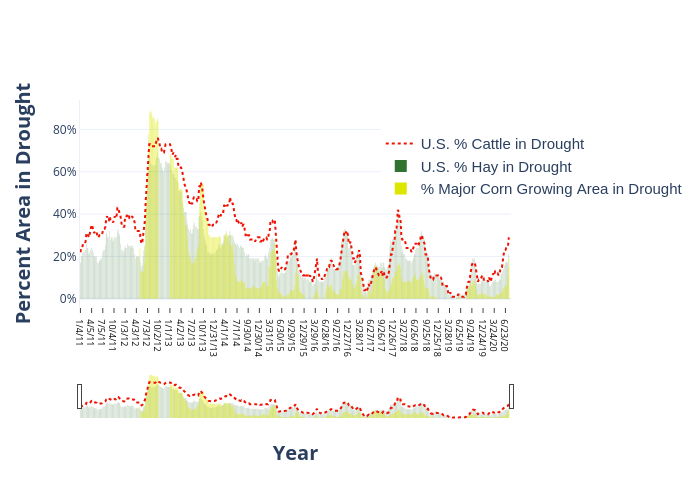Livestock Wx
What A Mess!
This week and next, expect significant amounts of precipitation from Oklahoma up into the Midwest. The rainfall is coming on top of already very soggy areas. We break this down below:

Rainfall in excess of 5 inches
Rainfall in excess of 5 inches has resulted in widespread soggy fields, inundation, and river flooding. Over the next 24-hours the focus for heaviest rain has been across Oklahoma and Texas. Take a look at rainfall amounts over the past week!

Current Soil Moisture
The following soil moisture estimate shows areas of likely soggy fields within areas shaded in dark green and blue.

Record Flooding
In addition, many rivers are above flood stage. Parts of the Middle Mississippi -- near and above St. Louis -- are experiencing major to record flooding.

7-Day Accumulated Precipitation Forecast
And there is not much positive news for the South Central U.S. with more wet weather next week. Here is the rainfall outlook for the next 7 days.

And it Gets Worse: The Risk of Heavy Precipitation Next Week
Starting May 9th, expect heavy precipitation over parts of Texas, Oklahoma, and Arkansas.


